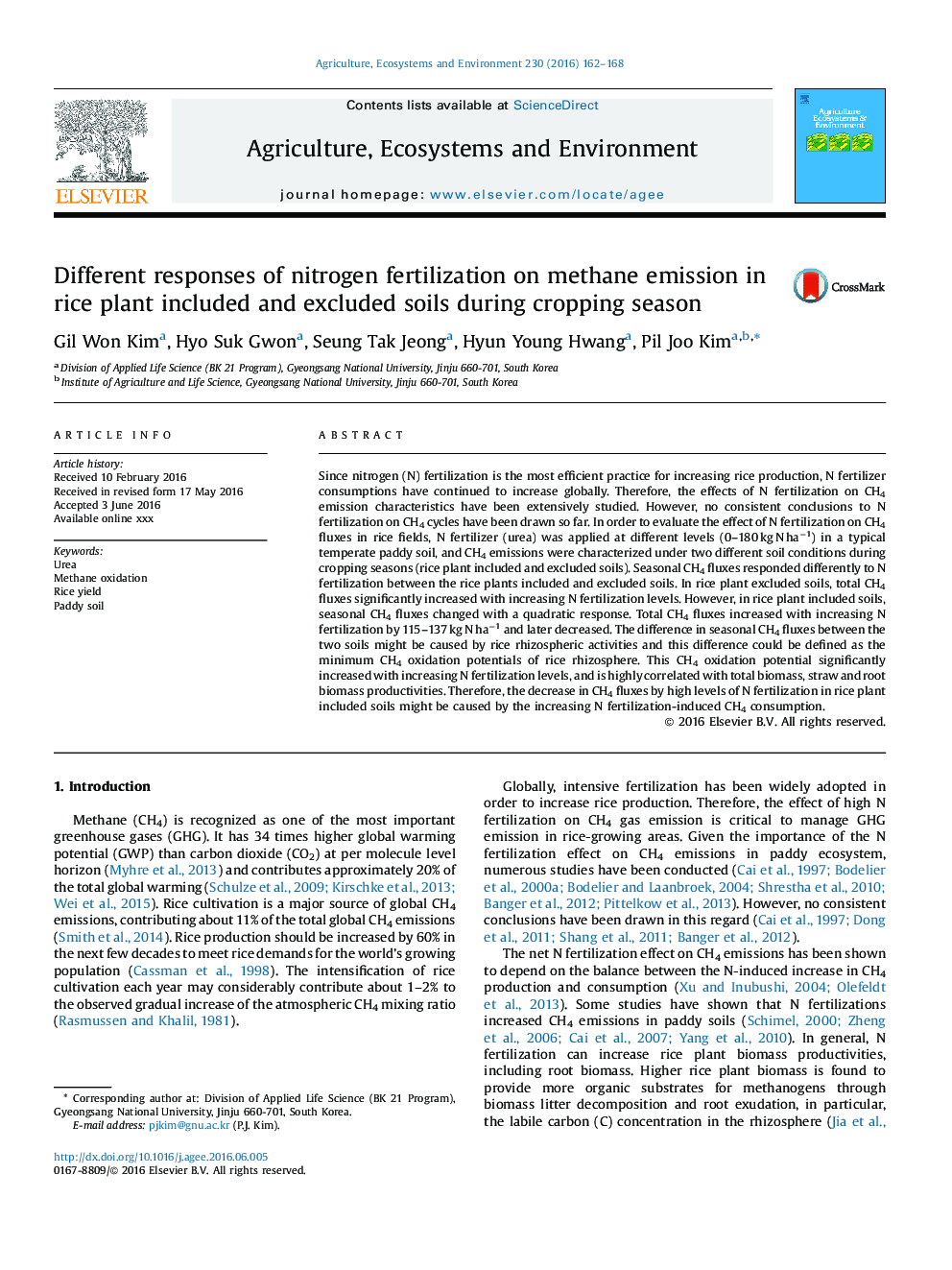| Article ID | Journal | Published Year | Pages | File Type |
|---|---|---|---|---|
| 8487386 | Agriculture, Ecosystems & Environment | 2016 | 7 Pages |
Abstract
Since nitrogen (N) fertilization is the most efficient practice for increasing rice production, N fertilizer consumptions have continued to increase globally. Therefore, the effects of N fertilization on CH4 emission characteristics have been extensively studied. However, no consistent conclusions to N fertilization on CH4 cycles have been drawn so far. In order to evaluate the effect of N fertilization on CH4 fluxes in rice fields, N fertilizer (urea) was applied at different levels (0-180 kg N haâ1) in a typical temperate paddy soil, and CH4 emissions were characterized under two different soil conditions during cropping seasons (rice plant included and excluded soils). Seasonal CH4 fluxes responded differently to N fertilization between the rice plants included and excluded soils. In rice plant excluded soils, total CH4 fluxes significantly increased with increasing N fertilization levels. However, in rice plant included soils, seasonal CH4 fluxes changed with a quadratic response. Total CH4 fluxes increased with increasing N fertilization by 115-137 kg N haâ1 and later decreased. The difference in seasonal CH4 fluxes between the two soils might be caused by rice rhizospheric activities and this difference could be defined as the minimum CH4 oxidation potentials of rice rhizosphere. This CH4 oxidation potential significantly increased with increasing N fertilization levels, and is highly correlated with total biomass, straw and root biomass productivities. Therefore, the decrease in CH4 fluxes by high levels of N fertilization in rice plant included soils might be caused by the increasing N fertilization-induced CH4 consumption.
Related Topics
Life Sciences
Agricultural and Biological Sciences
Agronomy and Crop Science
Authors
Gil Won Kim, Hyo Suk Gwon, Seung Tak Jeong, Hyun Young Hwang, Pil Joo Kim,
